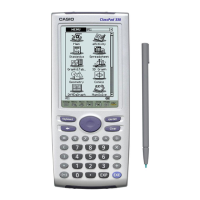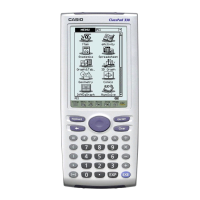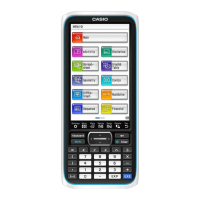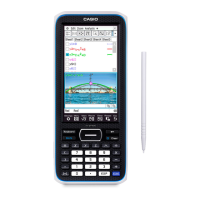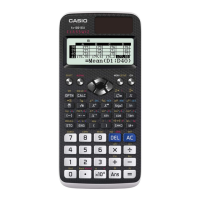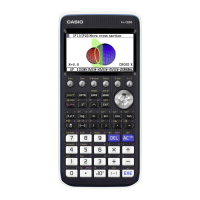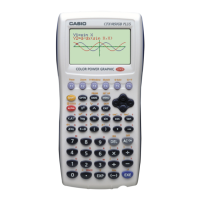Do you have a question about the Casio ClassPad 300 and is the answer not in the manual?
| Brand | Casio |
|---|---|
| Model | ClassPad 300 |
| Category | Calculator |
| Language | English |
Overview of device layout, screen elements, and basic keys for device operation.
Basic operations for powering the ClassPad unit on, off, and using the resume function.
Methods for data input using the keypad and the on-screen soft keyboard.
Managing user variables, programs, and functions, including folder operations.
Introduction to the main calculation interface, its windows, modes, and menus.
Performing fundamental arithmetic and parenthetical calculations with natural input.
Accessing advanced mathematical transformation, expansion, and calculation commands.
Navigating, zooming, scrolling, and configuring graph display parameters.
Generating number tables and summary tables from functions.
Real-time adjustment of graph coefficients or common variables.
Entering conic equations using preset forms or manually.
Graphing parabolas, circles, ellipses, and hyperbolas.
Configuring view parameters and drawing 3D plots.
Rotating, zooming, and changing the viewpoint of 3D graphs.
Entering recursive and explicit sequence expressions.
Understanding and generating various sequence tables.
Managing and inputting data lists for statistical analysis.
Calculating statistical measures like mean, standard deviation, and regression.
Performing various statistical hypothesis tests.
Calculating confidence intervals for population parameters.
Using tools to draw points, lines, polygons, and geometric figures.
Moving, copying, deleting, and manipulating drawn geometric figures.
Customizing the display of axes, grid, and zoom settings.
Solving equations for variables without algebraic manipulation.
Step-by-step guide for creating and saving eActivity documents.
Adding text, calculations, links, and application data strips.
Capturing screenshots and arranging them into a presentation.
Modifying content, adding text, and deleting pages within a presentation.
Steps for writing, saving, and running new programs.
Techniques for finding and fixing programming errors.
A comprehensive reference for available programming commands.
Accessing and configuring various application settings via the Setup menu.
Detailed explanation of settings available in various setup dialog boxes.
Checking memory usage and deleting data.
Restoring the device to its factory default state.
Calibrating the touchscreen for accurate input.
Setting up serial and USB communication parameters.
Step-by-step procedures for transferring data between units.

